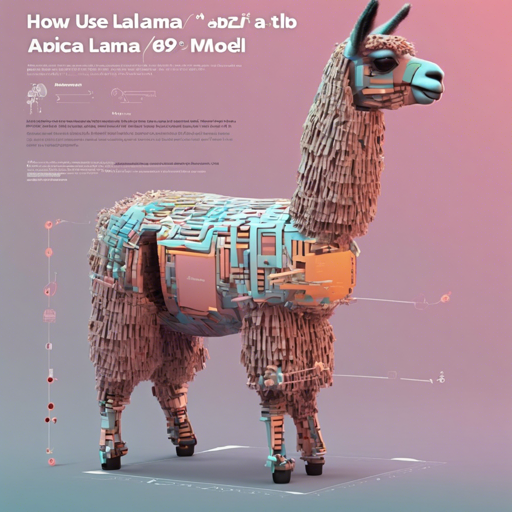In this guide, we’ll walk you through the process of using the Alpaca69B model fine-tuned for Aspect-Based Sentiment Analysis (ABSA). This model leverages the power of the Llama-2-7b-chat base model, fine-tuned on the SemEval-2016 dataset, to analyze sentiment with precision.
Model Overview
The Alpaca69B model is designed specifically for understanding the nuances of sentiment in text. Think of it as a highly trained chef who can taste different aspects of a dish and provide a detailed review of its flavors, aromas, and presentation.
Getting Started
To utilize the Alpaca69B model, follow these steps:
- Ensure you have the required dependencies such as the Transformers library from Hugging Face.
- Prepare your environment to run the model.
- Run the provided code snippet for sentiment analysis.
python
from transformers import AutoTokenizer
import transformers
import torch
model = "Alpaca69Bllama-2-7b-absa-semeval-2016"
tokenizer = AutoTokenizer.from_pretrained(model)
pipeline = transformers.pipeline(
"text-generation",
model=model,
torch_dtype=torch.float16,
device_map="auto",
)
def process_user_prompt(input_sentence):
sequences = pipeline(
f"### Human: {input_sentence} ### Assistant: aspect: ",
do_sample=True,
top_k=10,
num_return_sequences=1,
eos_token_id=tokenizer.eos_token_id,
max_length=200,
)
result_dict = process_output(sequences[0]['generated_text'])
return result_dict
def process_output(output):
result_dict = {}
# Extract user prompt
user_prompt_start = output.find("### Human:")
user_prompt_end = output.find("aspect: ") + len("aspect: ")
result_dict['user_prompt'] = output[user_prompt_start:user_prompt_end].strip()
# Extract cleared generated output
cleared_output_end = output.find(")")
result_dict['cleared_generated_output'] = output[:cleared_output_end + 1].strip()
# Extract review
human_start = output.find("Human:") + len("Human:")
assistant_start = output.find("### Assistant:")
result_dict['review'] = output[human_start:assistant_start].strip()
# Extract aspect and sentiment
aspect_start = output.find("aspect: ") + len("aspect: ")
sentiment_start = output.find("sentiment: ")
aspect_text = output[aspect_start:sentiment_start].strip()
result_dict['aspect'] = aspect_text
sentiment_end = output[sentiment_start:].find(")") + sentiment_start
sentiment_text = output[sentiment_start + len("sentiment: "):sentiment_end].strip()
result_dict['sentiment'] = sentiment_text
return result_dict
output = process_user_prompt("the first thing that attracts attention is the warm reception and the smiling receptionists.")
print(output)Understanding the Code
Imagine a busy restaurant where a chef is continuously tasting dishes from various tables, summarizing the flavors and guests’ feelings about the food. In our code:
- Chef (model): This is our Alpaca69B model that tastes and analyzes the input sentence.
- Recipe Book (tokenizer): The tokenizer assists the model in understanding the ingredients (words) and how they combine to form a dish (sentence).
- Kitchen (pipeline): The pipeline is where the magic happens, sending out the dishes (responses) to be tasted by our guests (users).
- Guest Feedback (process_user_prompt): This function formats the input to elicit responses from the chef, analyzing the aspect and sentiment of the given message.
Troubleshooting
If you run into any issues while trying to use the model, consider the following troubleshooting tips:
- Ensure that all necessary library dependencies are correctly installed.
- Double-check your input format and make sure it aligns with the requirements.
- If you are experiencing resource-related issues, consider running the model on a more capable hardware setup.
- For additional support, refer to the provided Google Colab notebook or the fine-tuning Colab notebook.
For more insights, updates, or to collaborate on AI development projects, stay connected with fxis.ai.
Conclusion
By following this guide, you can effectively leverage the Alpaca69B model for sentiment analysis tasks. The capabilities of this model allow for nuanced understanding and analysis that is invaluable in various applications.
At fxis.ai, we believe that such advancements are crucial for the future of AI, as they enable more comprehensive and effective solutions. Our team is continually exploring new methodologies to push the envelope in artificial intelligence, ensuring that our clients benefit from the latest technological innovations.

